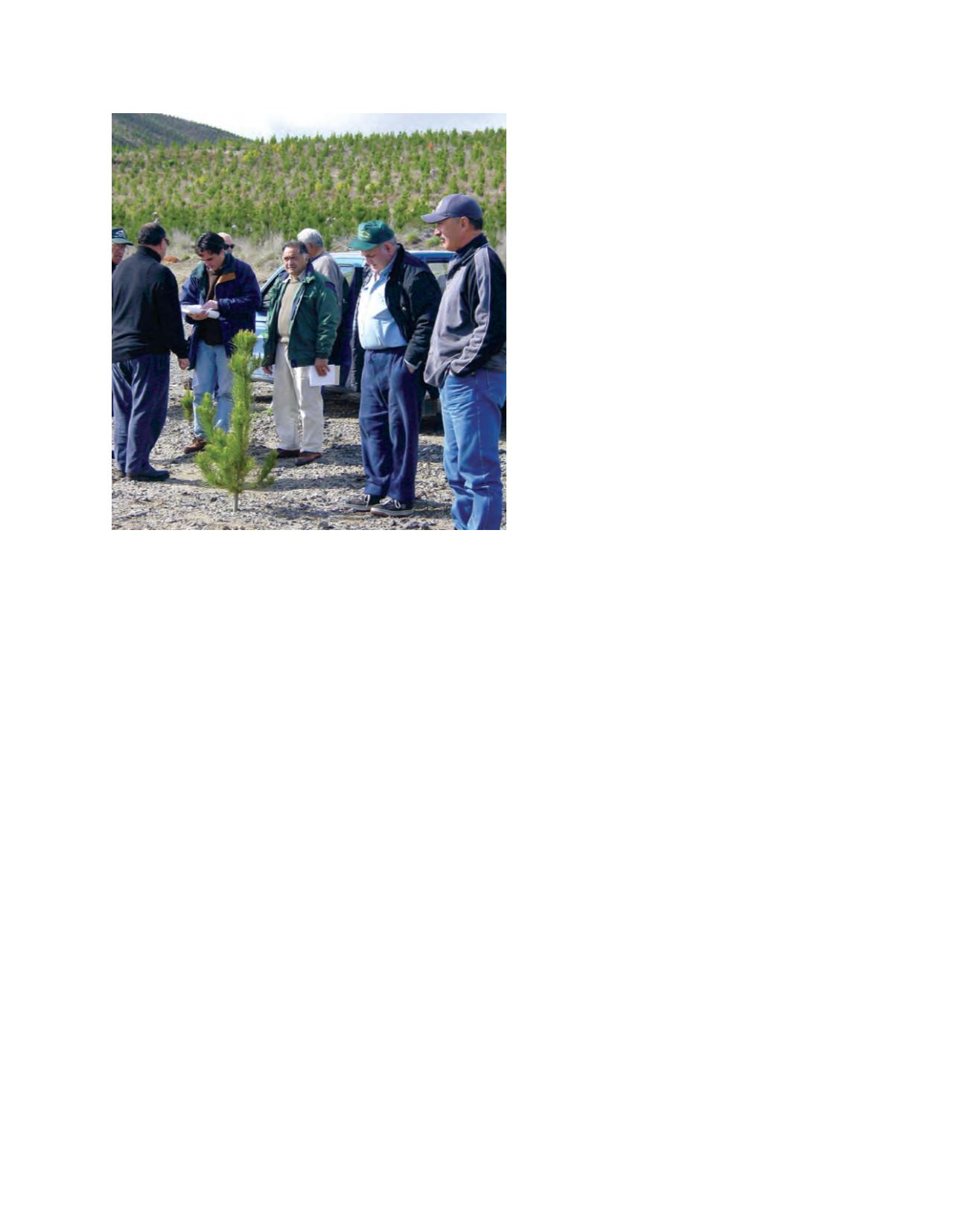

[
] 235
(trusts) for the purpose of negotiating forestry joint
ventures with the New Zealand Government.
Financing the venture
The landowners had no financial resources of their
own, nor did they have any capacity to raise capital
from lending institutions, as the tenure position of
their lands rendered them unacceptable as security.
The only viable option for funding was through
the New Zealand Government. Following a period
of engagement and negotiation, the Government
confirmed its participation by signing leases with Lake
Taupo Forest Trust in 1969 and Rotoaira Forest Trust
in 1973. The leases confirmed the agreed management,
capital investment flow and share of profits between
the venture partners.
Forestry as the preferred land use
The decision to adopt a regime of plantation forestry was
not based solely on commercial benefit. Both the land-
owners and the Government recognized the importance
of implementing a land use that was compatible with the
culturally and environmentally sensitive geographical
location. They also acknowledged that these production
forests would take significant pressure off the logging of
natural forests, a point that has been demonstrated in
New Zealand following the establishment of vast radiata
plantations.
The Trust leases
The original leases were for 70 years – considered
sufficient for the land to be cleared and planted and
two rotations of radiata pine to be grown, enabling the
Government to receive its anticipated return on capital.
These were subsequently reduced to one-rotation leases.
The landowners opted to take a share of stumpage (i.e. a
share of eventual harvesting profits), rather than an annual
rental. This was an important decision that signalled
their aspirations for active engagement in the business of
forestry rather than adopting the less risky and passive
role of being a static landlord. This was also a completely
unselfish act by the landowners of the 1960s. Most of them
were of the older generation and they knew that under a
stumpage arrangement, they themselves were unlikely to
receive any financial return in their lifetime, as harvesting
income would not start to be generated until harvesting
commenced after around 25 to 30 years. Their focus was
on creating benefits for the future generations of owners –
their grandchildren and beyond.
Maori values associated with ancestral land
Maori refer to the land as their foothold (turangawae-
wae), which references their identity within a timeless
and seamless geographical and historical landscape.
Maori genealogical networks link every entity within
the universe, whether animate or inanimate, organic
or inorganic. This relationship references the exten-
sive and respected network of tangible and intangible
elements that underpin the Maori holistic approach to
on centuries of observation, practice and accumulated knowledge.
While the practice was somewhat eroded by the loss of land and
natural resources, the principle of Kaitiakitanga is still strongly
adhered to by the Tuwharetoa (tribal group) which has authority
(mana whenua) over the land administered by the Lake Taupo and
Lake Rotoaira Forest Trusts.
Circumstances of the landowners – 1960s
In the early 1960s the Ngati Tuwharetoa faced further risks of major
land alienation. Local authorities imposed land taxes (rates) on land
even if it was non-income bearing. They were also implementing a
policy to secure large tracts of land as part of the Lake Taupo fore-
shore reserves scheme. The targeted land was almost all in Maori
ownership.
It became obvious to Maori that the only effective means of stop-
ping further land alienation was to implement commercially viable
developments on their land. The solution seemed clear but achiev-
ing this was fraught with obstacles created by the hybrid Maori land
tenure system established in New Zealand.
Multiple Maori ownership and land tenure
Two Maori trusts, The Lake Taupo Forest Trust and The Lake
Rotoaira Forest Trust, operate under joint venture arrangements
with the Government of New Zealand. Both are governed by specific
Maori land legislation. The total land area under the two Trusts is
48,000 ha, comprising 137 individual land blocks.
Tribal leadership under the elders, representing the
owners and led by the Tuwharetoa paramount Chief, Sir
Hepi te Heuheu, provided encouragement that success-
fully galvanized landowner support for the ‘business case’.
This leadership led to the many owners of these lands agreeing
to amalgamate their properties into two separate business entities
Trustees of the Lake Taupo Forest Trust
Image: George Asher
















